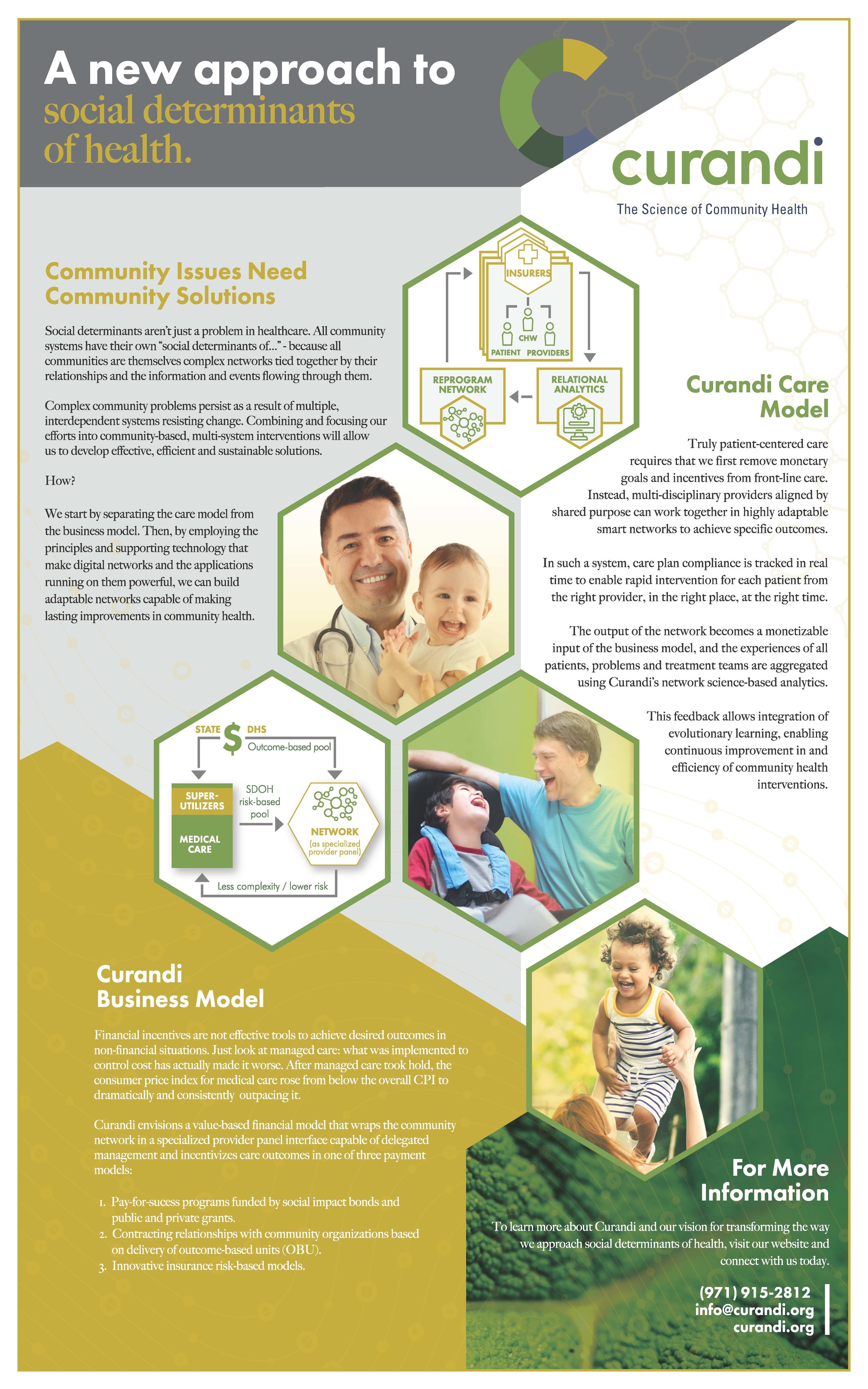Datapalooza - A New Perspective On Social Determinants
Panelists
Multi-System Problems Need Multi-System Solutions
Last week, I had the honor of participating in a session panel at Academy Health’s 2019 Health Datapalooza event in Washington, DC. Entitled, “Integrating Social Determinants in Clinical Settings: Not Just the Right Thing to Do, but Real ROI with Multi-Sector Collaboration,” the panel was moderated by Amy Vreeland, chief commercial officer at ACT.md, and included presentations by Martin Love of the North Coast Health Improvement and Information Network of Humboldt County, California, Ken Shapiro, director of whole person care for Marin County, California; and myself, Michael Rohwer, M.D., executive director of Curandi.
The importance of our topic was reflected in the standing-room-only crowd. Each of us brought our own unique experience and lens to the panel, and the moderator’s questions explored the issues from multiple perspectives. The resonance created between presenters and audience kept half the room talking until the room had to be cleared for the following session.
Marin County, California
Ken Shapiro led off by explaining how Marin County’s commitment to “whole person care” has delivered a 33 percent reduction in homelessness, a 44 percent reduction in hospitalization and a 36 percent reduction in emergency room visits. Ambulance and police calls have fallen over the same two years of program operation.
Their innovative model combines care coordination and data sharing across housing, medical, mental health and social services. Its focus on homelessness looks at both those who are currently homeless, but also targets the medically and socially complex upstream who are at substantial risk of becoming homeless.
Humboldt County, California
Martin Love, a former hospital CEO, also demonstrated how connecting community to healthcare pays off. Humboldt is a large, rural coastal county in northern California with high poverty, homelessness and an opiate/drug death rate twice the state average. Fortunately, Humboldt County has a high level of cooperation between the community and the healthcare system. Martin brought his hospital management expertise to the new North Coast Health Improvement and Information Network currently being co-developed with the local Independent Physicians Practice Association.
The network’s first project was a regional health information exchange that was subsequently extended using a community specialized technology from “ACT.md” to support integrated community health improvement. As a result, healthcare systems, social services, behavioral health and state health and human services gained access to a platform that created a common information repository, a means to exchange alerts and a way to coordinate care for the most vulnerable and costly patients. This created new partnerships to solve real problems, achieving actual outcomes and avoiding unnecessary costs. Success is driving system utilization to triple over the last year.
Curandi
On behalf of Curandi, I presented a new way to think about community health based in community science, using as my example a pilot currently underway in Salem, Oregon. The core innovation is the separation of care and business models, which creates an opportunity to develop outcome-driven care networks that self-organize to deliver results that are monetizable by a new outcome-based business model. The driver of self-organization is the ability to align outcomes within the network using the ACT.md platform. The network gains the ability to adapt to the needs of each patient because outcome alignment implicitly limits the need to align the internal processes of each participant.
These resulting networks are community-based and support the whole community - not just healthcare. Every community sector has its own social determinants; education, behavioral health, social integration and more are limited by the same issues we face in healthcare. The new community network is an opportunity to create synergy by working together in the place where the problem exists, and to realize the economies of scale if we can collaboratively create interventions to effectively alleviate the root causes of many ills.
For Medicaid plans, such a network will generate measurable net cost reduction and better outcomes within 1 to 2 years.
ACT.md
Marin County, Humboldt County and Curandi all share a platform that enables a new form of integration of healthcare and community. The ACT.md platform and the innovation support from the company supplying it has allowed all of us to test ideas and deliver results that build stronger, more productive community.
Curandi’s Datapalooza handout - download PDF


